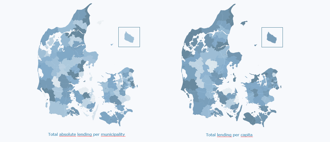

A local government funding agency
KommuneKredit was established by a special Act in 1898 and is legally organised as a credit institution under Danish law. Our members include all the 98 municipalities and the five regions in Denmark. The purpose of KommuneKredit is to provide financing for of projects in municipalities, regions and affiliated entities – at the lowest possible cost. We don't have to make a profit, and we don't pay dividends. Consequently, our profitability can be measured in terms of the low lending rates we offer our customers when they need to finance their projects. KommuneKredit is supervised by the Danish Financial Supervisory Authority (FSA).
Read more about us


